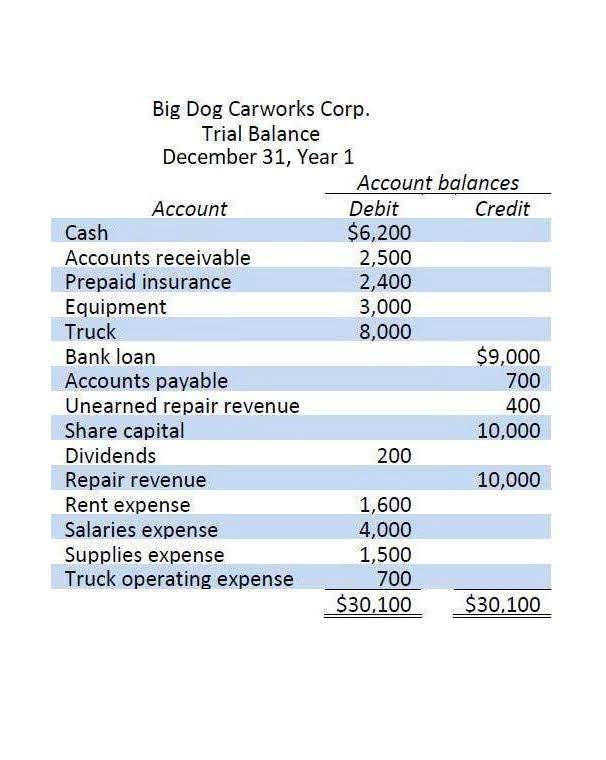Content

In order to recover indirect costs related to Federal awards, most organizations must negotiate an ICR with the Federal agency that provides the preponderance of funding, or Health and Human Services in the case of colleges and universities. NSF is the cognizant agency and negotiates formal negotiated indirect cost rate agreements for ~ 110 organizations. Organizations, for which NSF is the agency with rate cognizance, are required to regularly submit proposals to update their ICRs. CAAR is responsible for negotiating and issuing ICRs for NSFs cognizant awardees. CAAR does not negotiate ICRs for organizations that are not direct recipients of NSF funding (e.g. subrecipients) or for foreign organizations. Indirect cost charges are applied to all items when using this base. The total direct cost base is used for grants and contracts from non-federal funding organizations.

Before sharing sensitive information, make sure you’re on a federal government site. Press ReleaseApril 23, 2021 Mayor de Blasio, Speaker Johnson announce increased support for nonprofits and human service providers. Delta Template Job Aids Instructional materials to assist with the process of receiving, completing, and submitting the Delta Template. If your organization is eligible to apply for a Fiscal Year 2023 Accepted ICR and chooses not to submit an application, it will default to a 10% De Minimis Indirect Cost Rate, effective July 1, 2022. Early learning and development program resources for all children, birth to age eight, especially those in highest need.
Indirect Costs
For contracts other than those subject to paragraph of this section, the base period for allocating Indirect Costs shall be the contractor’s fiscal year used for financial reporting purposes in accordance with generally accepted accounting principles. The fiscal year will normally be 12 months, but a different period may be appropriate (e.g., when a change in fiscal year occurs due to a business combination or other circumstances). The CDE may assign indirect cost rates to non-LEAs that receive funding from the CDE as long as the non-LEA receives little or no funding directly from any federal agency.

The cost proposals are prepared according to the requirements specified in 2 CFR Part UNIFORM ADMINISTRATIVE REQUIREMENTS, COST PRINCIPLES, AND AUDIT REQUIREMENTS FOR FEDERAL AWARDS, using actual cost data from prior year operations. The proposals are reviewed by the federal negotiators and rates are negotiated. Based on various information available (e.g., historical cost information and the level of funding being requested), CAAR negotiates the funding of indirect costs, typically as a rate.
Calculating indirect costs
Occasionally when NSF plans to issue the organization only one award or a few awards or the total intended amount is not large, CAAR may decline to negotiate an ICR but, instead, recommend an awardspecific amount. Commercial (for-profit) organizations usually treat «fringe benefits» as indirect costs. These fringe benefits are applied to direct salaries charged to projects either through a fringe benefit rate or as part of an overhead/indirect cost rate. Therefore, fringe benefits treated as indirect costs should not be included as a direct cost in the «Personnel» category of the budget form of the grant application or on a contract proposal.
- The unrestricted rate is used with programs such as school food service and may also be used by local agencies on certain direct-funded federal programs.
- Indirect costs incurred in manufacturing operations are known as manufacturing overhead, while indirect costs incurred in the general and administrative area are known as administrative overhead.
- If the NICRA is expired, also provide the expired NICRA and the most recently submitted Indirect Cost Rate Proposal or Cost Allocation Plan for the appropriate period to be covered or application for extension.
- It is the policy of the Foundation to provide an indirect cost recovery of 29 percent of project costs on all project grants.
- The budget includes leasing or renting an off-site facility as a direct cost, and the personnel paid from the grant and any equipment are located at that facility.
The Fiscal Year 2023 https://www.bookstime.com/ Rate Application Process opened on March 15, 2022 for eligible providers. Fiscal Year 2023 eligible providers are organizations that either have an FY20 Accepted ICR that will be expiring on June 30, 2022, or do not yet have an Accepted ICR because the organization entered City contracting after December 31, 2020. Provisional rates are used when a final, predetermined, or fixed rate has not been established for a grantee. University researchmeans all research and development activities that are separately budgeted and accounted for by the institution under an internal application of institutional funds.
How are indirect cost rates determined?
Other items may only be excluded when necessary to avoid a serious inequity in the distribution of indirect costs, and with the approval of the cognizant agency for indirect costs. A provisional rate is a temporary rate applicable to a specified period which is used for funding, interim reimbursement, and reporting indirect costs pending the establishment of a final rate for the period.
The initiative is intended to make it easier for nonprofits to do business with the City, as it acknowledges and pays for critical indirect costs to deliver human services. New York City was the first big city in the country to make this investment. Today, providers can receive an Accepted Indirect Cost Rate from the City of New York based on a 10% De Minimis policy, a Federal Negotiated Indirect Cost Rate Agreement or an Independent Accountant’s Report that validates an ICR greater than 10%. Indirect costs are real costs incurred by the institution to acquire and maintain its buildings and equipment, and to provide operational support.
Policy
Once received, the rate and MTDC base indicated in the approved NICRA will apply to the project budget. If the Indirect Cost Rate Proposal is not approved by the cognizant agency during the NFWF sponsored project’s period of performance, the elected indirect cost rate of 10% of MTDC will apply and no indirect costs in excess of 10% of such MTDC can be recovered. (See section B.2)Adjustments to indirect costs are valid only through the effective period of the rates as shown in the NICRA.
- In general terms, an indirect cost rate is the percentage of an organization’s indirect costs to its direct costs and is a standardized method of charging individual programs for their share of indirect costs.
- Non-LEAs requesting an indirect cost rate from the CDE should contact the Fiscal Oversight & Support Office by e-mail or by phone as listed in the Questions section of this page.
- Under the Uniform Guidance, these costs are allowed with prior written approval of the funding agency, provided they are programmatically justified.
- LEAs annually submit Form ICR to the CDE along with their year-end financial reports.
- UAA offers more than 100 degree and certificate programs that consistently prepare students for success after graduation.
One are the fixed indirect costs which contains activities or costs that are fixed for a particular project or company like transportation of labor to the working site, building temporary roads, etc. The other are recurring indirect costs which contains activities that repeat for a particular company like maintenance of records or payment of salaries. Indirect costs are costs that are not directly accountable to a cost object . Indirect costs include administration, personnel and security costs. But some overhead costs can be directly attributed to a project and are direct costs. Comprehensive, streamlined, and accelerated selection processes establish an indirect rate through administrative qualification. Under these contracts, providers not administratively qualified may accept a set indirect cost rate assigned by TxDOT.
ICR Application in FY23
«No-Cost Extensions» cannot be requested or approved in order to hold projects open until NICRAs are approved. Fixed rates with carry forward provisions are not an option for Head Start grantees, according to the Division of Cost Allocation. The cost of space has risen rapidly during the Austin-area housing and construction boom.
What is difference between direct and indirect material?
Direct materials are directly incorporated in and form part of the final product manufactured. Indirect materials are consumed in various processes but do not become a traceable part of the final product.
Final – an indirect cost rate applicable to a specified past period that is based on the actual costs of the period. Since these costs are excluded from the determination of the indirect cost rate, it is not appropriate to include them in the pool of eligible program expenditures on which to charge indirect costs. Conversely, direct costs are costs that provide measurable, direct benefits to particular programs. For LEAs, these can include costs that relate directly to instructional programs and also support costs that relate to the peripheral services necessary to maintain the instructional programs.
Louisiana Board of Regents Support Fund Opportunities
Projects that are geographically inaccessible to normal departmental administrative services, such as research vessels, radio astronomy projects, and other field research remote from campus. Federal agency, or the same federal agency and the same pass-through entity, and that Federal agency, or pass-through entity in the case of a subrecipient, approves in advance a program-specific audit. A non-federal entity that expends $750,000 or more during the non-federal entity’s fiscal year in Federal awards must have a single or program-specific audit conducted for that year in accordance with the provisions of this part. Also available in Section II (Page II-4) of our indirect cost guide. Flexible support project grants, such as grants made to large, well-established organizations for the purposes of supporting the general operations of a separately managed center.
- An indirect cost rate agreement is issued once the indirect cost rate is approved.
- The Federal awarding agency must implement, and make publicly available, the policies, procedures and general decision making criteria that their programs will follow to seek and justify deviations from negotiated rates.
- For instance, all programs will use the business office at one time or another for services such as contracts, purchasing, payroll checks, and personnel management.
- The university covers all indirect costs related to research from its own accounts.
- Individual projects requiring significant amounts of project-specific database management; individualized graphics or manuscript preparation; human or animal protocols, and multiple project-related investigator coordination and communications.
- The regulation stipulates that entities that utilize an indirect cost rate on a federal grant must apply the rate to modified total direct costs.
